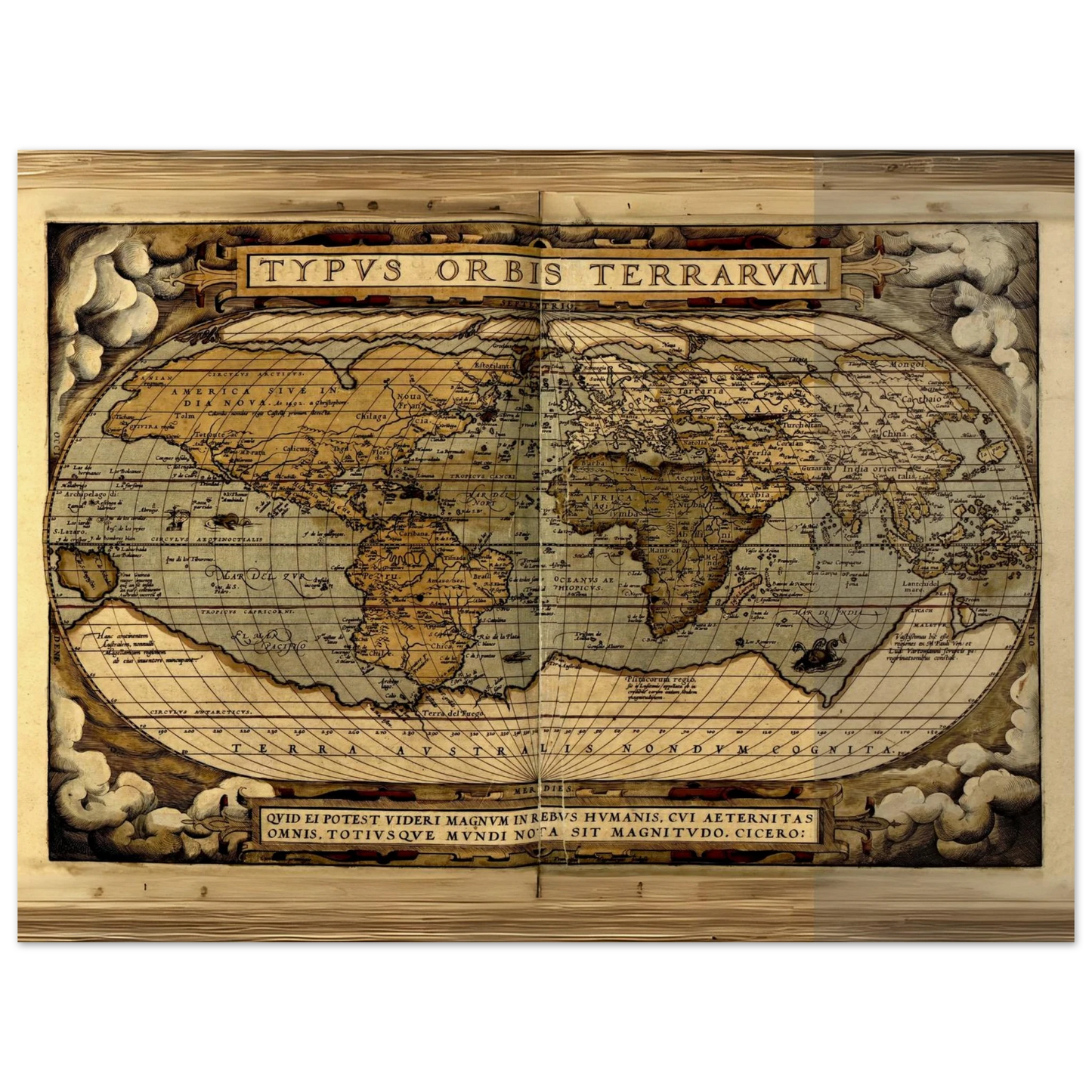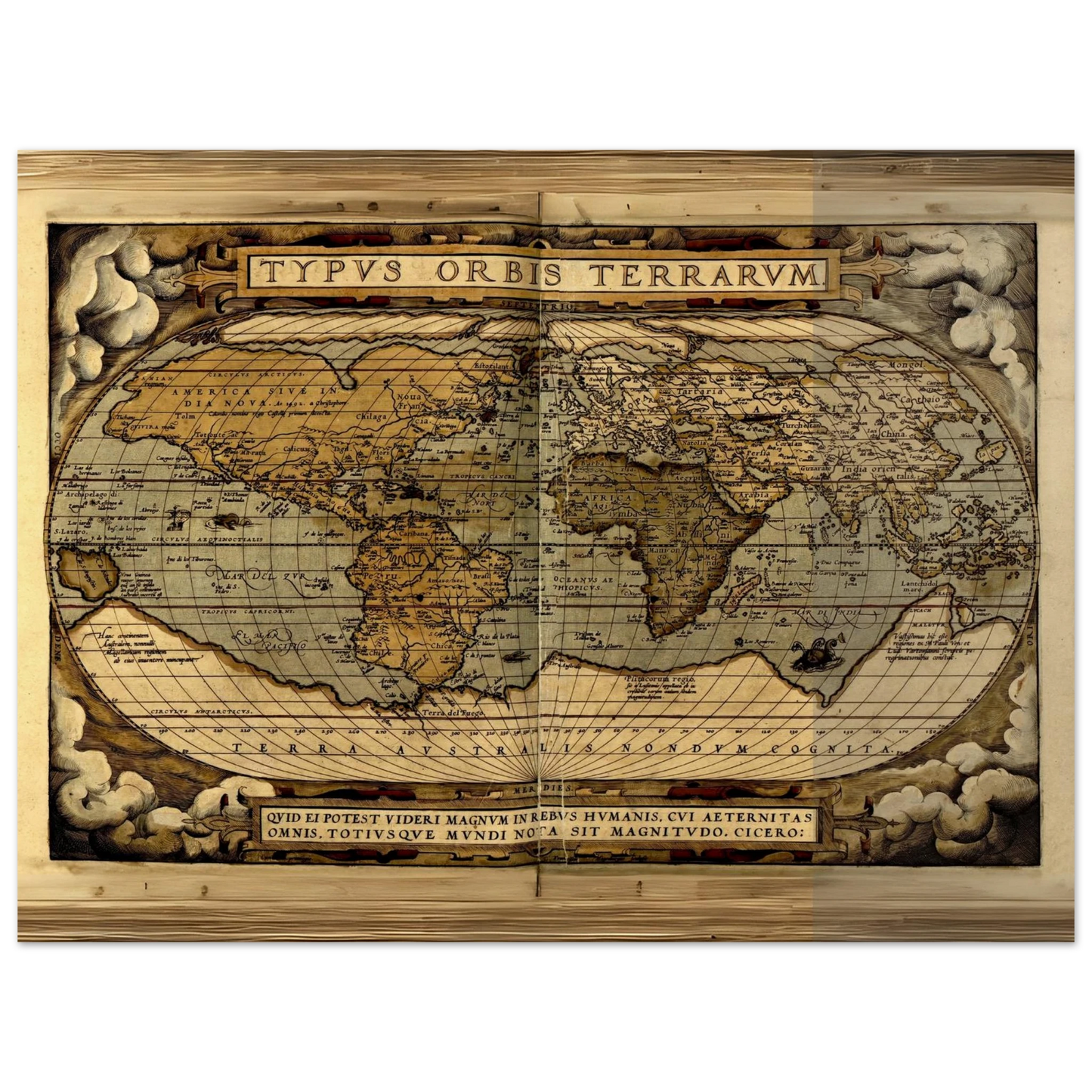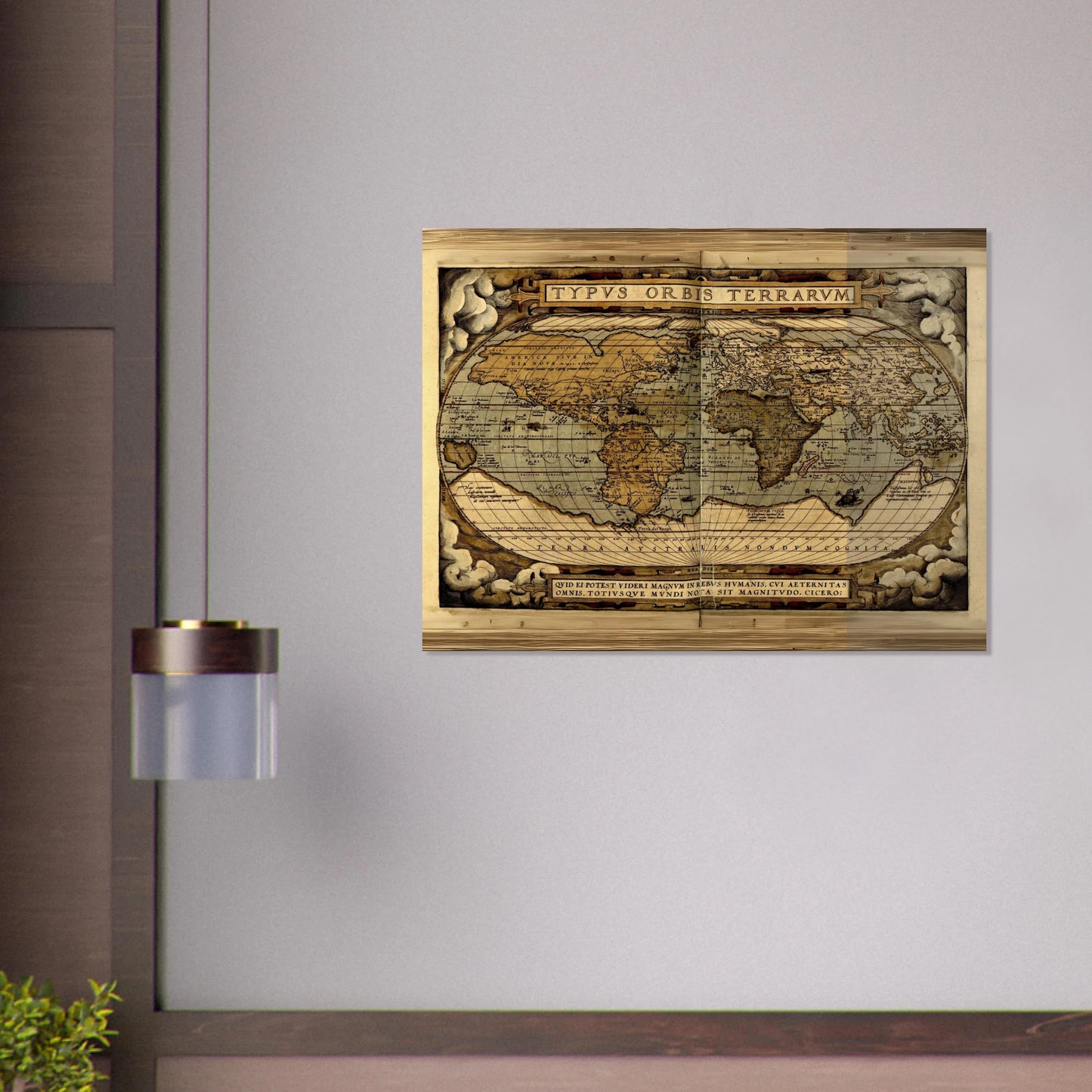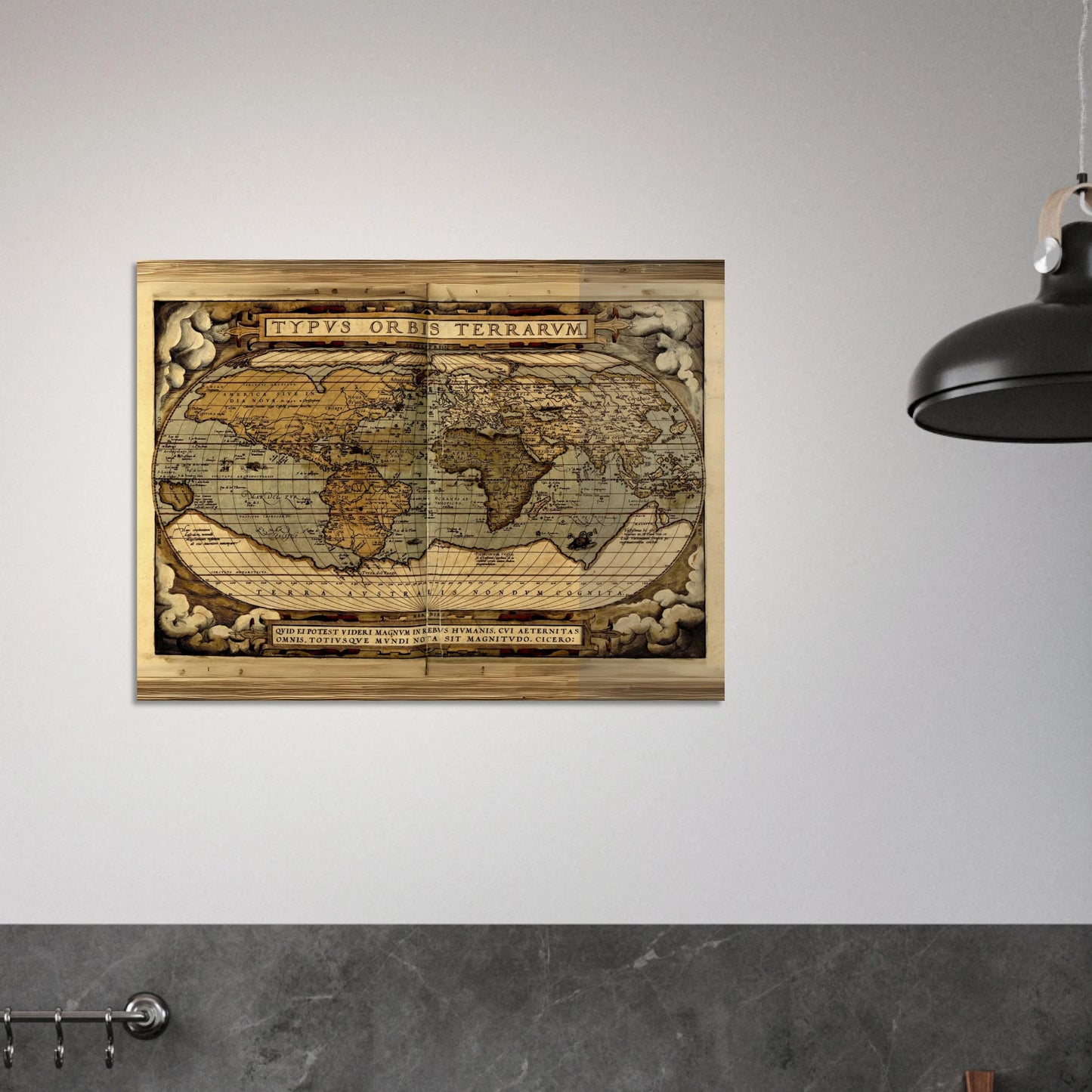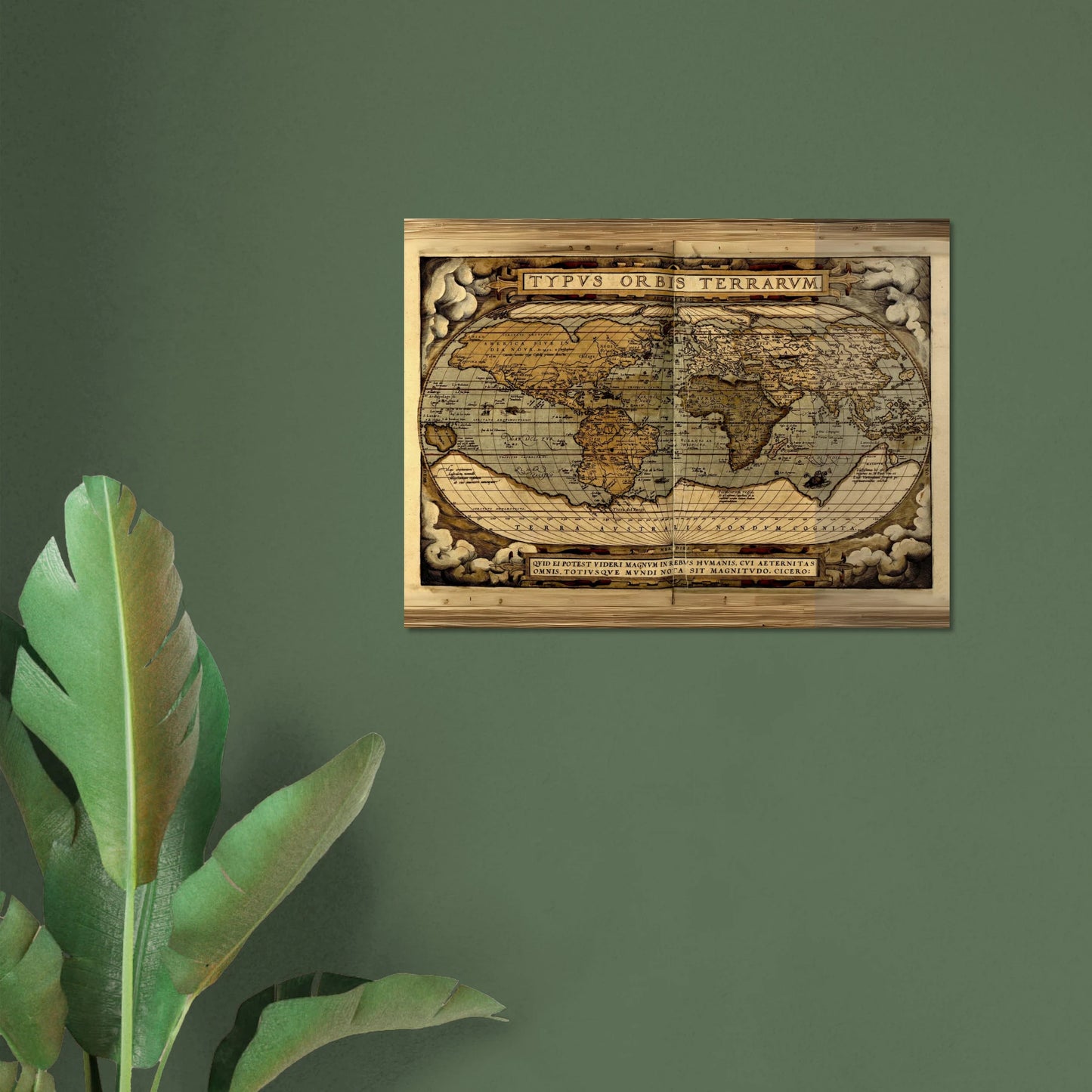World Map from First Modern Atlas "Theatrum Orbis Terrarum" (1570)
World Map from First Modern Atlas "Theatrum Orbis Terrarum" (1570)
Couldn't load pickup availability
🗺️ Map Title: Typus Orbis Terrarum
• Latin for “Image of the World.”
• This is one of the earliest modern printed world maps, created by Abraham Ortelius in 1570.
• It appeared in his famous atlas, the Theatrum Orbis Terrarum ("Theatre of the World"), widely considered the first true modern atlas.
📌 Key Features
🧭 Design & Style
Bottom: A Latin quote from Cicero:
"Quid ei potest videri magnum in rebus humanis, cui aeternitas omnis, totiusque mundi nota sit magnitudo?"
("What can seem great in human affairs to one who knows the eternal and the vastness of the universe?")
🌍 Geography
Continental shapes are distorted by modern standards, but incredibly advanced for the 16th century:
• North and South America are recognizable but exaggerated and incomplete.
• California is attached to the mainland.
• The Pacific Northwest and western Canada are speculative.
• Africa is quite accurate in outline.
• Asia is expansive but shows mythical elements (like Cathay/China).
• Australia does not appear; the southern continent is labeled as: Terra Australis nondum cognita ("Southern land not yet known")
🧙♂️ Myth and Mystery
Includes legendary locations and speculative geography:
• Cipango (Japan), Cathay (China), Terra del Fuego in the south.
• Many unexplored or incorrectly drawn areas, especially around the poles and Pacific.
🛶 Ships & Sea Monsters
• Common in maps of this period, they serve decorative and symbolic roles, representing the dangers and mystery of exploration.
🧠 Historical Importance
• Ortelius’ atlas (first published in 1570) marked a turning point in European cartography:
1) It unified knowledge from dozens of maps into one accessible volume.
2) It was mass-produced (for the time), spreading a consistent world image across Europe.
3) He credited other cartographers—a big shift toward intellectual collaboration.
More on the printing materials:
Master's Edition archival paper, in off-white and uncoated, offers museum-quality for art enthusiasts seeking a luxurious way to enjoy world-class artworks:
- Paper Finishing: Matte, uncoated, natural white (off-white).
- Acid-Free: pH above 7 to prevent yellowing over time.
- Paper Weight: 250 gsm (110 lb), Thickness: 0.29 mm (11.4 mils).
- Sustainable Paper: FSC-certified paper for sustainability.
Learn about paper types and their unique textures and finishes here.
Share
